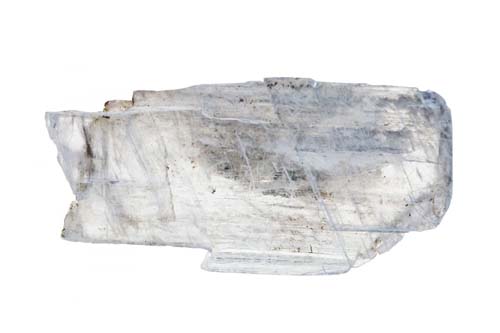Mica is a mineral name given to a group of minerals that are physically and chemically similar. They are all silicate minerals, known as sheet silicates because they form in distinct layers. Micas are fairly light and relatively soft, and the sheets and flakes of mica are flexible. Mica is heat-resistant and does not conduct electricity. There are 37 different mica minerals. The most common include purple lepidolite, black biotite, brown phlogopite, and clear muscovite.
The mica industry can be divided into two distinct but interdependent industries: those that produce sheet mica, and those that produce flake mica. Each industry, although somewhat dependent on the other, produces different end products.
Sheet Mica Mining:
Sheet mica is recovered by either sinking a shaft along the strike and dip of a pegmatite or by open-pit surface mining of semi-hard pegmatite ore. In either case, it is a very economically risky mining procedure because of the cost involved in locating the vein and the unpredictability of the quality and quantity of the mica that might be recovered once the vein is located and worked.
In underground mining, the main shaft is driven through the pegmatite at suitable angles to the dip and strike using air drills, hoists and explosives. Crosscuts and raises are developed to follow promising exposures of mica. When a pocket of mica is found, extreme care is exercised in the removal to minimize damage to the crystals. Small explosive charges of 40% to 60% strength are carefully placed around the pocket and care is exercised with the drilling procedure so the mica will not be penetrated. The charge is just sufficient to shake the mica free from the host rock. After blasting, the mica is hand-picked and placed in boxes or bags for transporting to the trimming shed where it is graded, split, and cut to various specified sizes for sale.
Sheet mica is no longer mined in the U.S. because of the high cost of mining, the small market, and the high capital risk. Most sheet mica is mined in India, where labor costs are comparatively low.
Flake Mica Mining:
The flake mica produced in the U.S. comes from several sources: the metamorphic rock called schist as a by-product of processing feldspar and kaolin resources, from placer deposits, and from pegmatites. It is mined by conventional open-pit methods. In soft residual material, dozers, shovels, scrapers, and front-end loaders are used in the mining process. North Carolina’s production accounts for half of total U.S. mica production. Hard-rock mining of mica-bearing ore requires drilling and blasting. After blasting, the ore is reduced in size with drop balls and loaded on the trucks with shovels for transport to the processing plant, where mica, quartz and feldspar are extracted.
Jaw Crusher in the Mica Ore Beneficiation Processing Plant
The principal use of ground mica is in the gypsum wallboard joint compound, where it acts as a filler and extender, provides a smoother consistency, improves workability, and prevents cracking. In the paint industry, ground mica is used as a pigment extender that also facilitates suspension due to its lightweight and platy morphology. The ground mica also reduces checking and chalking, prevents shrinkage and shearing of the paint film, provides increased resistance to water penetration and weathering, and brightens the tone of colored pigments. Ground mica also is used in the well-drilling industry as an additive to drilling “muds.”
The plastic industry used ground mica as an extender and filler and also as a reinforcing agent. The rubber industry uses ground mica as an inert filler and as a mold lubricant in the manufacture of molded rubber products, including tires.
Sheet mica is used principally in the electronic and electrical industries. The major uses of sheet and block mica are as electrical insulators in electronic equipment, thermal insulation, gauge “glass”, windows in stove and kerosene heaters, dielectrics in capacitors, decorative panels in lamps and windows, insulation in electric motors and generator armatures, field coil insulation, and magnet and commutator core insulation.







